Update: Nju Nikonos Conversion System
Update: Nju Nikonos Conversion System
By Andrej Belic.

We initially presented our lens project to quality conscious underwater photographers two years ago, and felt that it achieved higher optical standards compared to regular lens/port combinations. Since then, we have had to actually put into manufacture those things we had been talking about. There was a lot of work and trial and error involved but in the end it has all worked out and is now being sold to the demanding customer. More recently, we have expanded our system to almost all housing brands.
Those who know the size of the Nikonos lenses and that of different port openings also should know that in order to mount the lens as a whole (to achieve highest optical quality and to retain the Nikonos look) you’ll need an adaptor for your housing and also that these adaptors might be too small for some lenses, depending on port size. Here is an overview of supported housing brands.
Housings:
Aquatica
Aquatica is one of the last additions to our line up. At first we were contacted by an American customer who wanted to make an adaptor on his own. The adaptor for Aquatica is sturdily built and suited for Aquatica typical use and cold water diving. It can handle the 13mm fisheye and 28mm prime lens. The zoom wheel has to be removed, an easy task with a screwdriver and few seconds of time.
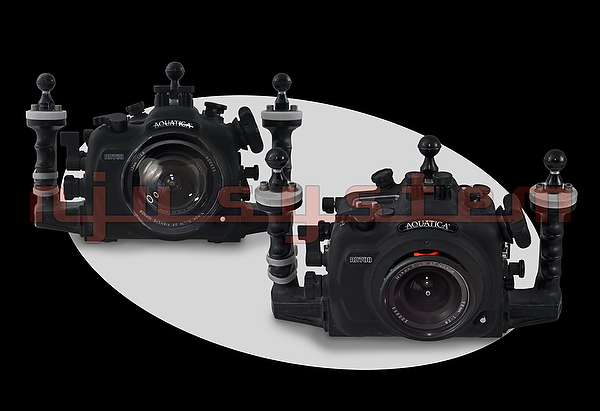
BS Kinetics
German manufacturer of carbon fiber underwater housings with a large variety of housings. In Nikon’s full frame models we can also offer adaptor for 13mm and 28mm lenses. It was one of the first requests after our initial series.
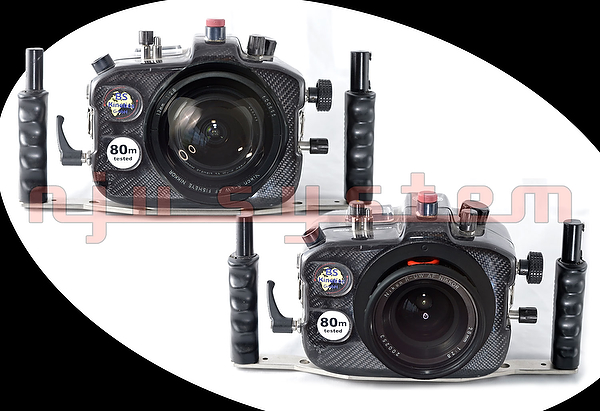
ewa marine
Ewa Marine manufacture splash bags best suited to the needs of apnea divers. We received a request from our co-worker Peter De Hueber who is an underwater cameraman (and responsible for the great photographs of this article). He wanted maximum optical quality paired with lightness, so we made it and he has achieved great results. The ewa marine can handle Nikonos 13mm and 28mm. The fisheye is used for model photography while the 28mm serves for fish photography. The adaptor has to be manually fixed and should stay permanently on ewa marine bag.
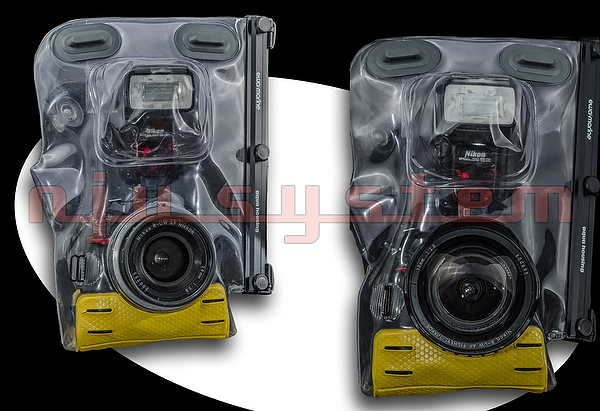
Nauticam
Our Nikonos conversion was very well received from users and Nauticam housings are well suited for it. Nauticam is one of the few brands that has a port opening is large enough for all Nikonos lenses, including 50mm macro and 20-35 zoom. Also no removal of parts is necessary. At first our Nauticam adaptor didn’t support large 20-35mm, but we’ve made it work a year ago.
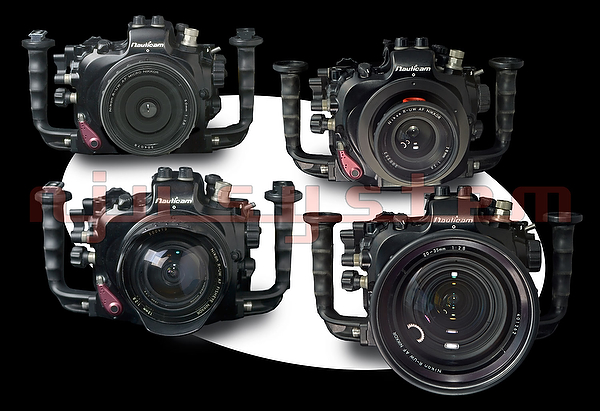
nju system
Nju is our own brand of universal underwater housings. One of our first design goals was the unrestricted use of Nikonos lenses. Our port opening is larger than others, and so it’s showing the red framed distance information (which also won’t get scratched) on the RS 20-35mm and all other Nikonos lenses. Since our housings are electronically controlled we can also focus lenses manually via software getting the same performance as original Nikonos RS camera.
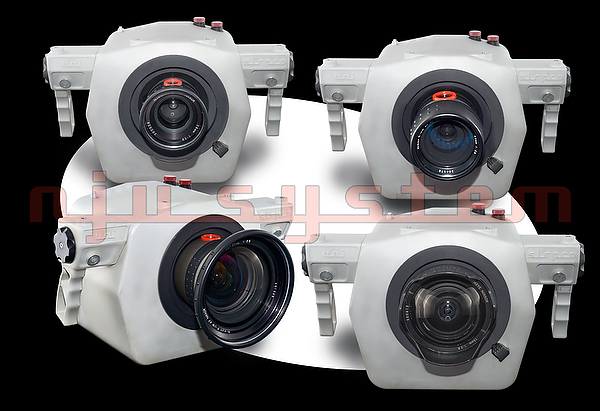
Sea & Sea
Thumbs up for Sea & Sea, their port opening supports all Nikonos RS lenses: 13mm, 20-35mm, 28mm and 50mm. But the removal of zoom wheel is necessary, quite easy to handle.

Seacam
We made adaptors for some Seacam pro photographers, and have expanded our line-up to include 13mm, 28mm and lately the 50mm macro. In order to house adaptor and lens the removal of zoom-wheel and focus wheel is necessary, something that can be done with two screwdrivers and a few seconds of time. The 50mm macro is very well acclaimed with Seacam photographers who own Nikonos lenses.
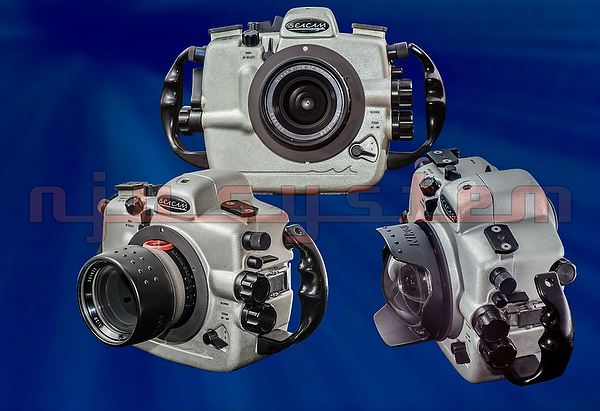
Sealux
We received full support from this German manufacturer of small and light underwater housings. Sealux adaptor currently takes 13mm and 28mm, but with a little tweaking on future housing models it should be possible to include 50mm macro and 20-35mm zoom lens. Removal of zoom wheel and sunshade on 13mm lens is necessary. All you need is a small screwdriver.
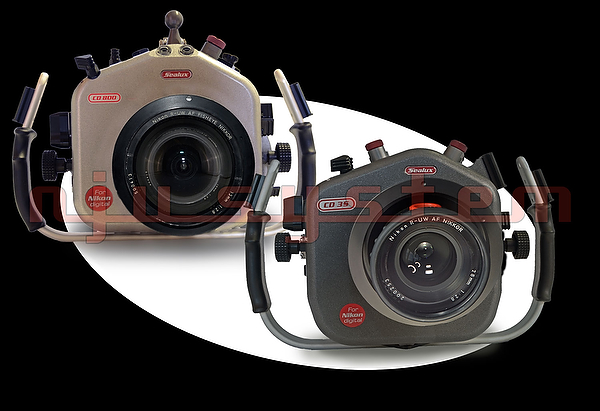
Subal
Also one of our firsts, Subal type 4 Nikonos adaptor supports 13mm and 28mm and there’s no need to remove components.
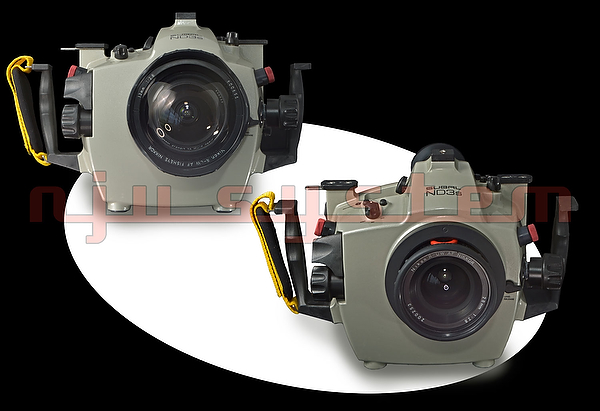
Hugyfot and Ikelite?
We have examined it and by now there are following problems: Hugyfot’s strobe control is in the way, in order to mount adaptor properly it has to be removed and mounted differently. We will re-examine it on the next trade show and then see if we can proceed or not.
Camera are mounted directly onto the backplate of Ikelite housings meaning that the distance between camera’s lens bayonet and Ike housings vayies and (as it seems) too long, but if you’ve got an Ikelite housing and want Nikonos conversion feel free to contact us and then we can test if will work.
Lenses:
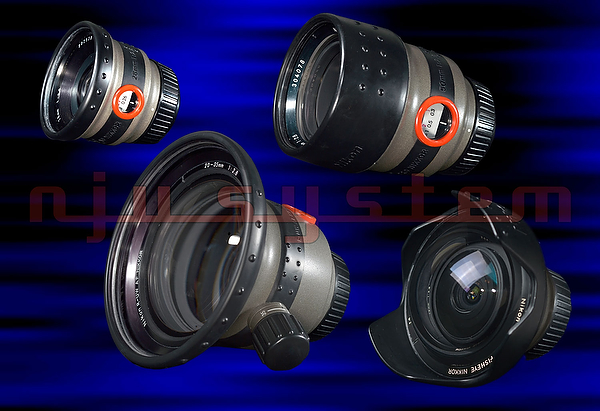
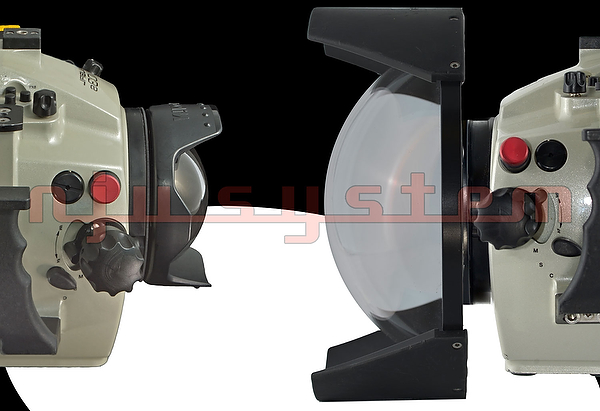
13mm Fisheye
The Nikonos RS fisheye lens is the star of the line with a lens design still used today. It offers more resolution and sharpness over the whole frame than any lens-port combination regardless of dome-port size. The front lens is only 4” in diameter and is a specifically engineered underwater-lens for the optically altered fisheye. With stopped down aperture it is possible to touch objects with dome and still get sharp image. It’s also very light, weighing only 1 kg.
13mm lenses are hard to get, especially after our conversion service has started. However we still have a supply of optics if demanded. Prices have climbed from 1.000 € to 1.500-2.000 €. We can also repair/replace the front lens which can get scratched after years of use.
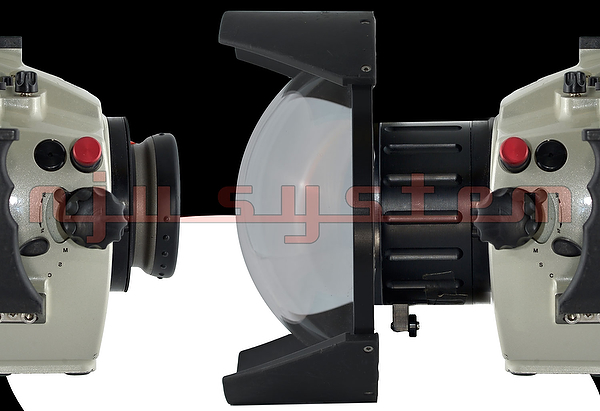
28mm Prime.
The 28mm is a small and fast lens suitable for fish photography. It weighs only 500g but has higher optical performance than a 16-35mm@35mm behind a 9” dome. A close focus distance of 0,25m enables portrait shots of small to medium sized fish. Lens also features fastest AF of all Nikonos RS optics because of small size. 28mm are easy to get, they cost between 200 € to 700 € depending on condition.
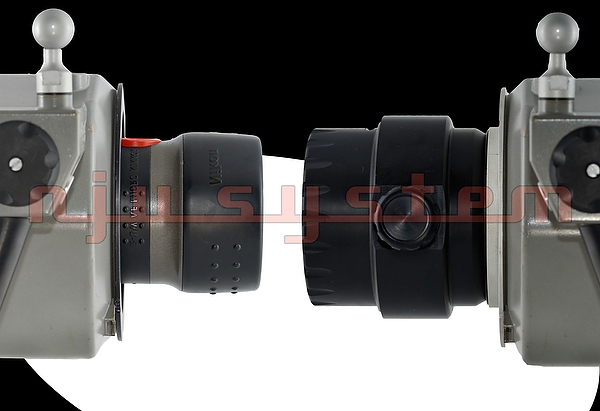
50mm Macro.
This is the only Nikonos RS lens featuring a flat port. This means that it can be used in air but also signaling that there should be no improvement in optical quality compared to regular lens-port combinations (we didn’t test yet, but will check). Still it’s the most sought after Nikonos lens for conversion after the 13mm. It’s surprisingly compact and weighs only 1 kg and offers good close focusing distance for pros paired with standard focal length suited for medium sized fish. Not suited for fast moving small fish that need speedy AF tracking, but for most other macro to medium fish subjects. Also quite easy to get, prices start from 300 € and end at 800 €. We have successfully replaced scratched front lenses that plague cheaper offerings.
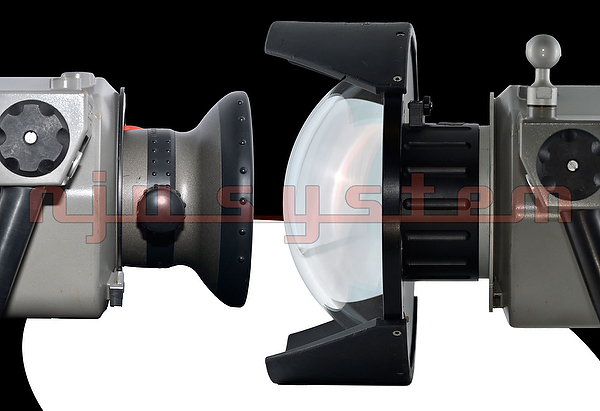
20-35mm Zoom.
This is the first and only underwater zoom ever made, groundbreaking when it was announced 20 years ago. Loosely based on the 20-35mm land zoom design it features a large front lens specifically engineered for the zoom sitting behind. It has wider angle compared to RS 28mm, but AF is slower due to size of moving lenses. Its angle of view is more of a normal zoom by today’s means, but still a sought after rarity selling for well over 1.000 € on the used lens market. It would be of more interest to demanding underwater photographers, but its sheer size makes it unfavorable for most port openings. Image resolution is higher than any 24-70mm/2.8 type lens sitting behind 9” dome can offer. It weighs 1800g.
Conversion System
Our conversion is a two stepp process. On one side we need to modify lenses to work with today’s digital SLRs. The lens has to be sent in to us for conversion and servicing and it usually takes 3 weeks. We also do repair and replacement of scratched front lenses. Upon completion, the lens works with new Nikon SLRs but it’s not waterproof with housing, so you’ll need an additional adaptor for port opening. These are made of marine grade alloy and come hard anodized in black color.
Nikon’s F bayonet is made for all Nikon lenses since 1959, the RS is no exception and neither are modern digital cameras. In terms of their use on modern SLRs and underwater, there were some details to be taken care of which we have solved two years ago. There is no strength issue with hydrostatic pressure acting on the lens. We have improved the original Nikonos o rings and have found that the converted lenses and adaptors seal effectively. To date, we have not experienced a single flood with the lenses we have converted.
Our system is quick and easy to attach and allows the lens to be correctly optically centered. It also allows for manual focus if required. Most housings can be quickly and easily modified to use our lenses by removing the zoom gear. This is neither time consuming nor complicates and can be reversed in around 30 seconds with a minimum of tools.
In practice, we have found that the larger Nikonos lenses, 13mm, 28mm and especially 50mm, are top heavy and thus balance many “back heavy” housings.
Additionally I’d like to stress the advantages in optical quality. An integral lens design where all elements are in one lens is the optimum since lens elements are ideally centered and aligned with camera sensor. Also the camera should rest on a stable saddle/slide, a tripod screw on a platform is always prone to lose grip over time and can’t provide optimal and constant center for camera. A lens/adaptor on such housing solves this problem since it fixes lens on camera and aligns sensor, but if you feel the need to dismantle lens then neither have you got optimal center for camera, nor for port. Not a good idea from an optician’s point of view…
O-rings
One of the main problems of Nikonos RS lenses were their red o-rings made of silicone which were fragile in handling and the reason why the RS project was a financial loss and finally stopped (not because lenses were heavy). They couldn’t stand silicone-grease, this knowledge – which is more common today - was very rare in the 90s. We use reinforced RS o-rings with a slightly thicker but softer silicone which seals better than original and come in the same orange color.
Our adaptors also have this visible orange o-ring on their black anodized alloy body. They are very soft and easy to handle.

Verdict
Nikonos lenses have changed underwater photography technique. They offer higher optical quality and smaller size. They are also highly adaptable to housings. Fisheye 13mm and prime 28mm fit all ports, the larger macro 50mm and zoom 20-35mm are suited for larger port openings. Our own housing line has been designed to mount all RS lenses and provide access to functions like manual focusing and distance information. If you have read my report on Photokina, http://wetpixel.com/articles/andrej-belic-photokina-2014 high quality lenses in standard focal lengths from Zeiss, Sigma and Schneider-Kreuznach have emerged as a new trend in photography. The Nikonos lenses fit in the same approach for divers.
Author
Andrej Belic has been a dedicated underwater photographer for many years before he started equipment designing. His first invention was the conversion of Nikonos lenses and the adaptation to existing housing brands. The second – much larger - project brought to life a new generation of universal underwater housings suited for all camera models. More on that soon…
Photography by Peter de Hueber.